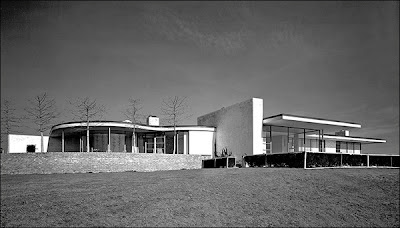In a Long Island, N.Y., village called Old Westbury, at the end of a long drive lined with Gatsby-like Georgian manses, stands a glass-walled International Style house that still looks like the future. Edward Durell Stone, best remembered as the architect of Washington, D.C.’s Kennedy Center for the Performing Arts, designed the house as a weekend retreat for industrialist and art collector A. Conger Goodyear, who founded the Museum of Modern Art and served as its first president (the two first worked together on the museum’s designs). Though the residence is revered as a landmark structure—The New Yorker’s architecture critic, Paul Goldberger, called it “one of the most important houses built in the United States between the two world wars”—until last month it had not been inhabited since Goodyear’s death in 1964. In the 1970s, the Goodyear family donated it to the New York Institute of Technology, which sold it in 1997 to a Long Island developer. The developer’s plans to level the 6,000-square-foot house and build mansions on four-acre plots was thwarted by the World Monuments Fund, which placed the house on its 2002 watch list of endangered properties. With funding from the Barnett Newman Foundation, among others, the organization bought the estate in 2005. Now listed on the National Register of Historic Places, the Modernist house has changed owners several times in the past six years; most recently, real estate developer and art collector Aby Rosen purchased it in October. (If you're in the market, one of the only remaining Stone houses in Washington, D.C., is currently listed at Sotheby's for $6.9 million.)

